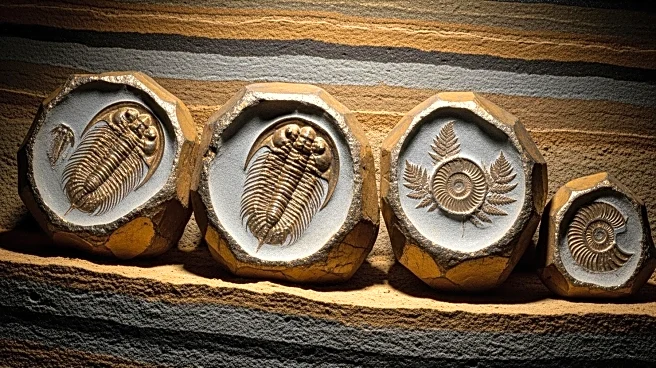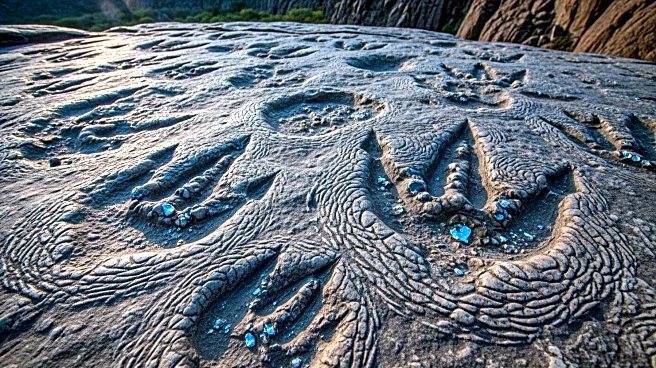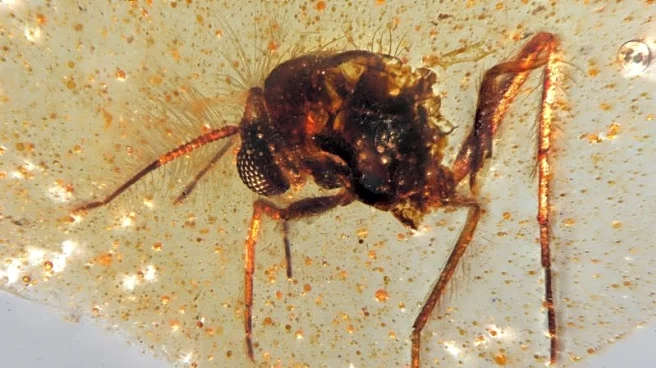What is the story about?
What's Happening?
A study published in the journal Geobiology by researchers from Curtin University in Australia has uncovered significant findings regarding the preservation of prehistoric life through fossilized feces, known as coprolites. These ancient remnants, some dating back 300 million years, have been found to contain intricate molecular data that provide insights into the diets and ecosystems of extinct animals. The research focused on coprolites from the Mazon Creek fossil site in the United States, known for its exceptional fossil preservation. The study revealed that microscopic grains of iron carbonate, rather than phosphate minerals, play a crucial role in preserving these delicate molecules over geological time. This discovery was likened to finding hidden treasures by Dr. Madison Tripp, the lead researcher. The team expanded their analysis to include coprolites from various species and geological periods, confirming that the relationship between iron carbonate and biomolecule preservation is a recurring pattern.
Why It's Important?
The findings from this study have significant implications for the field of paleontology. By identifying iron carbonate as a key factor in the preservation of biological information, researchers can refine their fossil hunting strategies to focus on specific rock types that may harbor molecular clues. This approach not only aids in the discovery of more fossils but also enhances the reconstruction of ancient ecosystems. The molecular data contained within coprolites allow scientists to develop a more comprehensive understanding of past life, including animal behaviors, diets, and environmental interactions. This research elevates the scientific value of coprolites, transforming them from mere curiosities into rich sources of information that can unravel the complexities of prehistoric life and ecological dynamics.
What's Next?
The study's findings suggest a shift in paleontological methodologies, with a focus on identifying carbonate minerals in fossil sites to uncover preserved biomolecules. This approach could lead to new discoveries and a deeper understanding of ancient ecosystems. Researchers may continue to explore other fossil sites globally to validate the role of iron carbonate in biomolecule preservation. Additionally, the study opens avenues for interdisciplinary collaboration, combining geology, chemistry, and biology to further investigate the preservation processes of ancient life forms.
Beyond the Headlines
The discovery of iron carbonate's role in preserving molecular data within coprolites highlights the intricate processes involved in fossilization. This finding challenges traditional beliefs about fossil preservation and underscores the importance of interdisciplinary research in uncovering new scientific insights. The study also emphasizes the potential for coprolites to provide a more nuanced understanding of prehistoric life, offering a window into the ecological dynamics and interactions of ancient species. As researchers continue to explore these ancient remnants, they may uncover further details about the evolution and adaptation of life on Earth.
AI Generated Content
Do you find this article useful?















